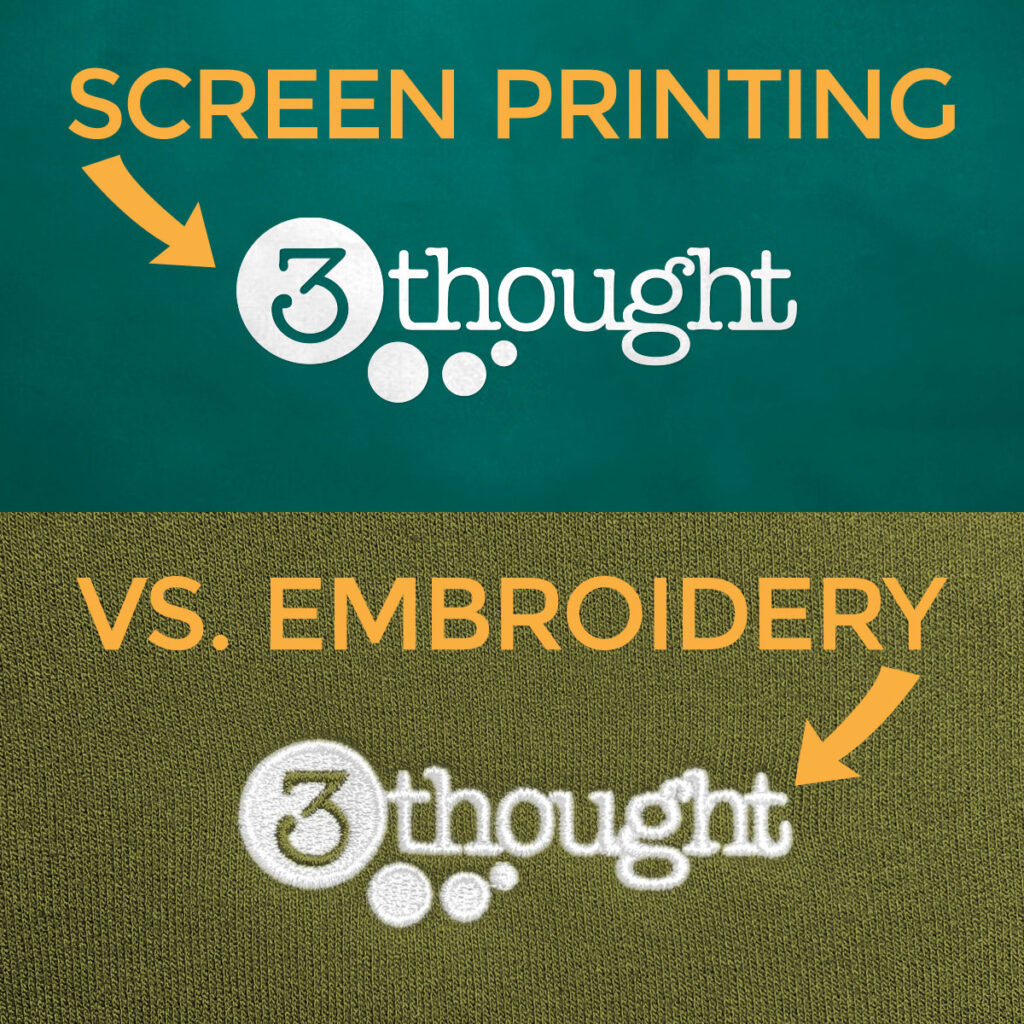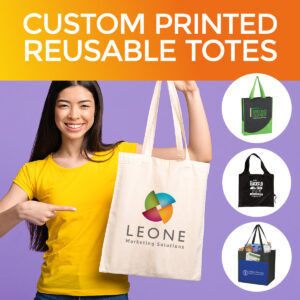
Screen Printing vs. Embroidery
Last Updated on January 20, 2023 by Rachel Leone

Which imprinting method is best for your products?
Many companies choose embroidery for small runs because of its durability and perceived higher quality.
For larger runs, screen printing can be more versitile allowing you to choose from more products. It's also cost-effective and better for large scale distribution.
When it comes to which is best, the story isn't always as cut and dry, and there are a few other considerations you'll want to know and keep in mind when choosing your promotional product and imprint technique.
Screen printing Information
Screen printing uses inks that are applied to a substrate using an actual mesh screen which essentially stencils each color of your logo or message onto your promotional products. Ink can be applied very quickly to each product, and vendors are capable of screen printing logos at a fairly decent rate. You can even layer multiple colors on a product to create 2, 3, or 4+ color imprints.
Screen Printing Advantages
- Precision - Screens can be very detailed, meaning your logos and designs will reproduce accurately - even at smaller sizes, which can be a huge problem for embroidering.
- Versatile - Ink adheres to most solid materials, meaning screen printing can be used on pens, drinkware, boxes, labels, and plastics regardless of the shape of the product. In many cases, specialized screens are designed to wrap around oddly shaped products.
- Speed - Screen printing is typically faster than embroidering (even with multiple colors), so vendors can produce more products per hour/day (even with drying times.)
- Affordable - Because of the speed of production and the cost of the ink, screen printing tends to cost less than embroidery making it a great choice for high-volume giveaways.
Screen Printing Disadvantages
- Gradients - While possible to simulate gradients of colors using half-tone techniques, screen printing is best with solid floods of color. Neither screen printing nor embroidery can or should be used to create photographic quality imprints.
- Durability - It takes a very long time, and a lot of use before screen printing begins to fade or crack, but if you wash a mug 1000 times or wear your favorite t-shirt for 20 years, you'll eventually see signs of wear.
- Perceived Quality - When it comes to quality, both screen printing and embroidery are excellent; however, most people consider embroidery to be the higher quality of the two.
Embroidery Information
Embroidery is the technique of using thread to stitch logos and messages on to products. The most commonly embroidered promotional products are polos, jackets, blankets, fleece, and hats. Because embroidery relies on the product being soft enough to stitch thread to, the choices of products will be limited, however many recipients prefer embroidered gifts to screen printed making these products highly desired.
Embroidery Advantages
- Perceived Quality - Whether for its cost or aesthetics, many recipients feel that embroidered products are higher quality and, therefore more valuable.
- Ideal for Targeted Prospects - Because of the increased cost with embroidery, your marketing approach should be laser-focused and concentrate on high-value prospects vs. screened gifts for brand awareness campaigns. Both techniques can work great, but embroidered gifts are better for converting prospects who are ready to do business.
- Durability - While not always the case, embroidered logos tend to last longer than screened logos.
Embroidery Disadvantages
- Precision - Not all logos translate well to embroidery. Small details can "fill" or "plug" and not look as good when recreated using thread (especially at small sizes.) If you're planning on doing a lot of embroidering, it's a good idea to use a simplified verion of your logo.
- Versatility - With embroidery, you'll have a lot less products to choose from simply because solid products aren't an option.
- Cost - Embroidery takes longer and you pay by the thread, so larger more complicated logos and designs will cost more than their screen printed counterparts. If it's your first time, you'll likely need to create a special logo file for embroidery - adding to the set up cost.











